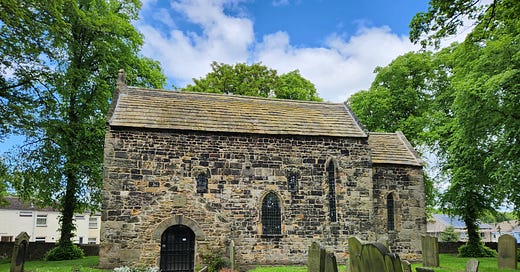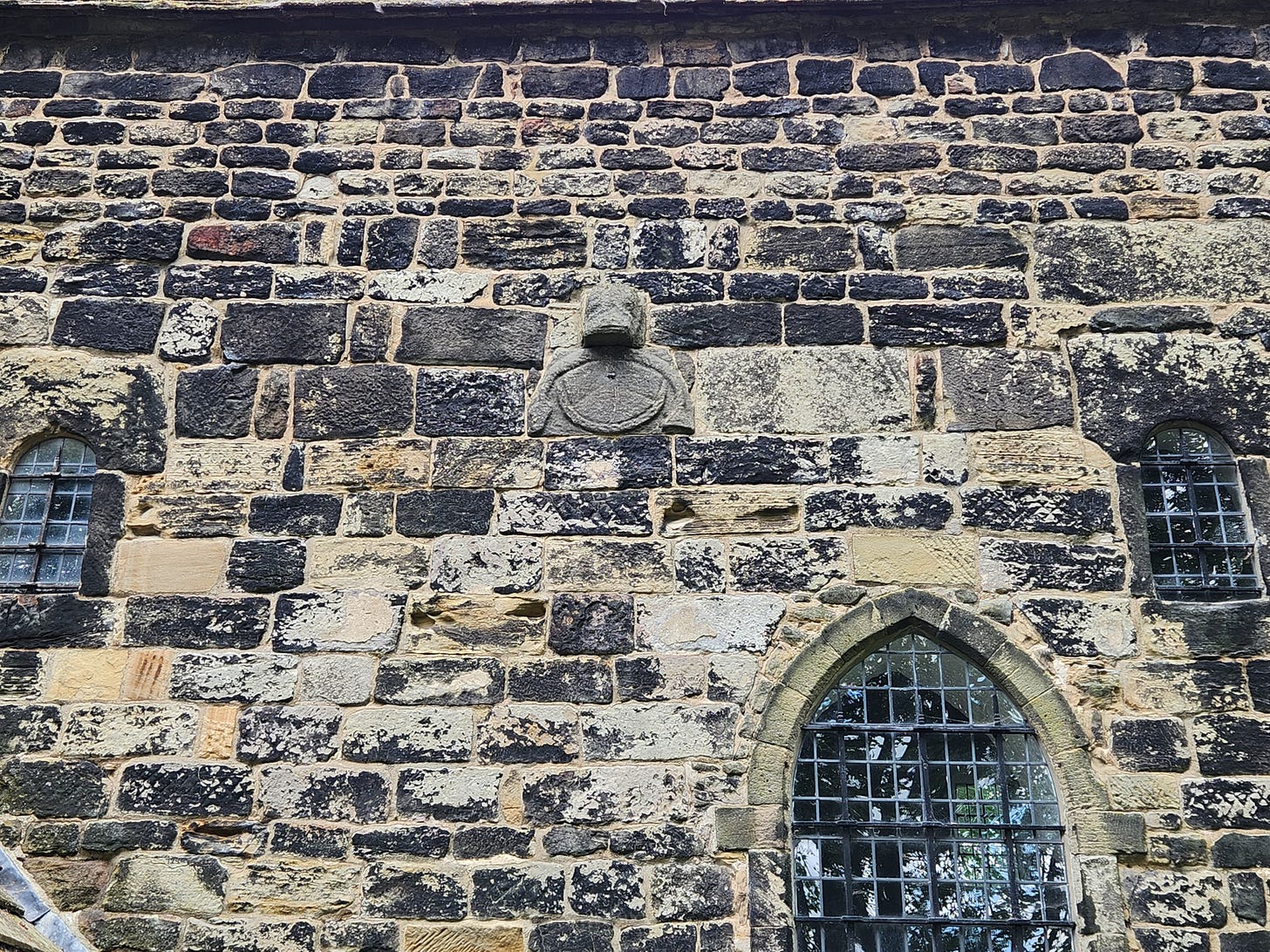In the county of Durham in the north of England there is a tiny church which is incongruously placed in the middle of a housing estate. Obviously, the houses came later and these days, scattering small houses around such an ancient monument would be anathema, but in the heady days of the 1970s, when the Old Order in All Things was being swept away, this seemed an entirely reasonable thing to do.
The photos online are mostly taken from one particular angle where, if the trees are in full leaf, the houses are screened out. But this one is not so fortunate and you can see the houses outside the boundary wall on either side. There is a porch at left which blends into the stone in this picture but in reality stands out from the structure. Other than this porch and the larger windows, this church is unaltered from when it was built in the 7th century - such a rare thing.
I decided to post this one this week because at this time of May we have a lot of feast days of saints important in the early Church in England and this building dates from around 675 AD, from a time just before Bede (feast day 27th May) was born but after St Augustine of Canterbury (feast day 28th May) began his evangelising efforts in the south, beginning at Canterbury in Kent.
This church is a long, long way from Kent and is in the area evangelised by the Irish missionaries, an incredibly ascetic bunch who nevertheless inspired thousands of people in the northern half of Britain to adopt the Christian religion. As such, this is truly a missionary church, remaining largely unaltered in the many centuries since. It’s a glimpse of where our distant ancestors worshipped.
It has a circular boundary which always indicates an Irish missionary origin. Often I visit much later churches but if they have a circular boundary, you know they go back to the 7th century. When you walk through the gate, the high stone wall almost enfolds you in its embrace and shuts out the world outside. This is God’s Acre, a sacred place. This one is unusual in that it has a high wall; most only have a low one and we don’t know if they all had tall walls like this.
Terribilis est locus iste: hic domus Dei est et porta coeli: et vocabitur aula Dei.
Terrible is this place: it is the House of god, and the Gate of Heaven; and it shall be called the Court of God.
Genesis 28:17
The church sits towards the back of the enclosure, surrounded by graves with some gravestones still standing (many have been moved). A porch sticks out from the front of the building. If you stand to the right of this, you can look at a few of the windows.
The two small windows here are Anglo-Saxon, the larger one is a later insert. Anglo-Saxon churches only had these small windows and must have been very dark. In the middle of the wall here is an ancient Mass dial, used like a sundial with a stick of some kind stuck in the middle of the dial. It indicated the time for Mass and Vespers, etc. It’s the oldest one in the country. What you also notice here is the variation in the size and shape of stone. Some of this may be due to rebuilding after damage during Viking raids in the 9th century, but much of it is due to the fact that the stone used was robbed from Roman buildings nearby; more particularly Binchester Roman Fort.
Keep reading with a 7-day free trial
Subscribe to Incola ego sum in terra to keep reading this post and get 7 days of free access to the full post archives.





